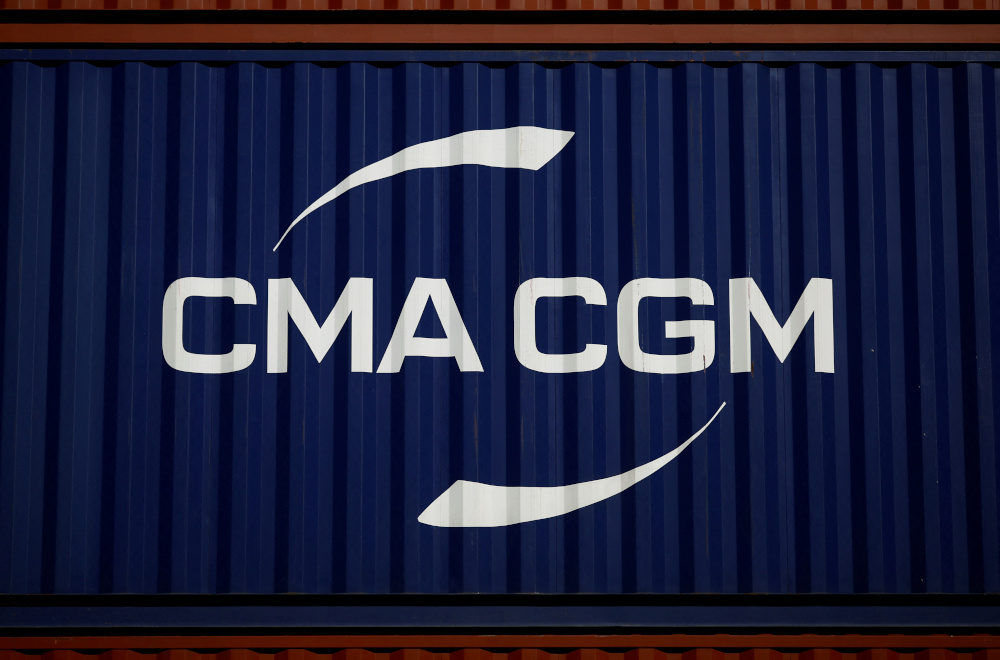WASHINGTON, June 27 — US President Donald Trump said yesterday that a trade deal with Chinese President Xi Jinping was possible this weekend but he is prepared to impose US tariffs on virtually all remaining Chinese imports if the two countries continue to disagree.
Trump, who departed for the G20 leaders summit in Osaka, Japan, yesterday, also raised the possibility that he may impose a lower, 10 per cent duty on a US$300 billion (RM1.24 trillion) list of Chinese imports, instead of the proposed 25 per cent rate.
Trump is expected to meet with Xi on Saturday in Osaka, a conversation that could revive stalled negotiations between the world’s two biggest economies or launch a much deeper, costlier trade war that would drag down global growth and roil financial markets.
“It’s absolutely possible. ... We have to get a good deal,” Trump said in an interview with Fox Business Network. “It’s possible that we’ll make a deal, but I’m also very happy where we are now.”
Relations between Washington and Beijing have spiraled downward since talks collapsed in May, when the United States accused China of reneging on pledges to reform its economy.
Trump said Chinese leaders “want to make a deal. They want to make a deal more than I do.”
US Trade Representative Robert Lighthizer and Treasury Secretary Steven Mnuchin are due to meet with Chinese Vice Premier Liu He ahead of the Trump-Xi meeting. US Commerce Secretary Wilbur Ross also was added to the US delegation at the last minute at Trump’s request, a senior US official said at a Washington event where Ross had been scheduled to speak.
Some Chinese officials who were not previously part of China’s delegation were also applying for Japanese visas, an industry source briefed on the matter said, adding that this was a possible sign of momentum for the Trump-Xi meeting.
Shortly after Trump returns from the Osaka summit, he will be in a position to impose a 25 per cent tariff on US$300 billion worth of Chinese consumer goods from cellphones, laptop and tablet computers to tube socks and baby carriers.
A public comment period on the tariffs ends on July 2 following seven days of public hearings in which US companies large and small begged to be spared from the tariffs and warned of hardships in shifting production out of China. .
“I would do additional tariffs, very substantial additional tariffs, if that doesn’t work, if we don’t make a deal,” Trump said yesterday. But he added that he could consider lowering the duty to 10 per cent from the proposed 25 per cent.
Administration officials have said that a 10 per cent tariff is more easily offset by Chinese companies absorbing the added costs and by declines in the value of China’s yuan currency.
China and the United States have already imposed tariffs of up to 25 per cent on hundreds of billions of dollars of each other’s goods in a trade war that has lasted nearly a year.
More than half of Chinese consumers have recently avoided US-made products in support of their country, according to a new poll conducted by London-based advisory firm Brunswick.
The poll of 1,000 Chinese and 1,000 American consumers showed that 68 per cent of Chinese respondents said their opinions of American firms had become more negative, while 59 per cent of Americans had an unfavourable opinion of China-based companies.
Global trade tensions contributed to a 2.1 per cent drop in the April US trade deficit to US$50.8 billion as both imports and exports fell, the Commerce Department reported yesterday. But the April US trade deficit with China jumped nearly 30 per cent to US$26.9 billion, while the trade gap with Mexico fell sharply.
Fitch Ratings yesterday forecast that imposing a 25 per cent tariff on the US$300 billion in Chinese goods would chop 0.4 per cent from world economic output. The International Monetary Fund has forecast a 0.5 per cent reduction, equivalent to erasing South Africa’s economy.
Trump said China knows what the United States needs for a trade deal, and pushed for China to return to the negotiating table with the same concessions they had made before talks abruptly ended in May.
The two sides could agree not to impose new tariffs as a goodwill gesture to get negotiations going, a US official said on Tuesday.
‘Drive-by tariffs’
Trump has bipartisan support on taking a tough stance on China, although not for his use of tariffs as a tool to exert pressure on Beijing.
A senior Democrat said yesterday he hoped the standoff with China would result in lasting changes.
“We’ve gone this far — we ought to be working to try and have some of the structural changes, some of the advantages, some of the (intellectual property) protections, and China living up to its obligations under the (World Trade Organisation),” said US Representative Earl Blumenauer.
Blumenauer, who chairs the House of Representatives’ Ways and Means trade subcommittee, said he disagreed with what he called Trump’s “drive-by tariffs” and hoped the president would not accept a deal that simply involved selling more goods to China rather than changing bilateral terms of trade.
Trump said if Washington was unable to reach a deal, his plan was to reduce business with China. Asked about companies relocating production from China to Vietnam, he said Vietnam treated the United States even worse than China.
The United States is cracking down on companies that have used countries such as Vietnam and Cambodia as staging posts to ship goods from China to the United States without paying tariffs. — Reuters






















